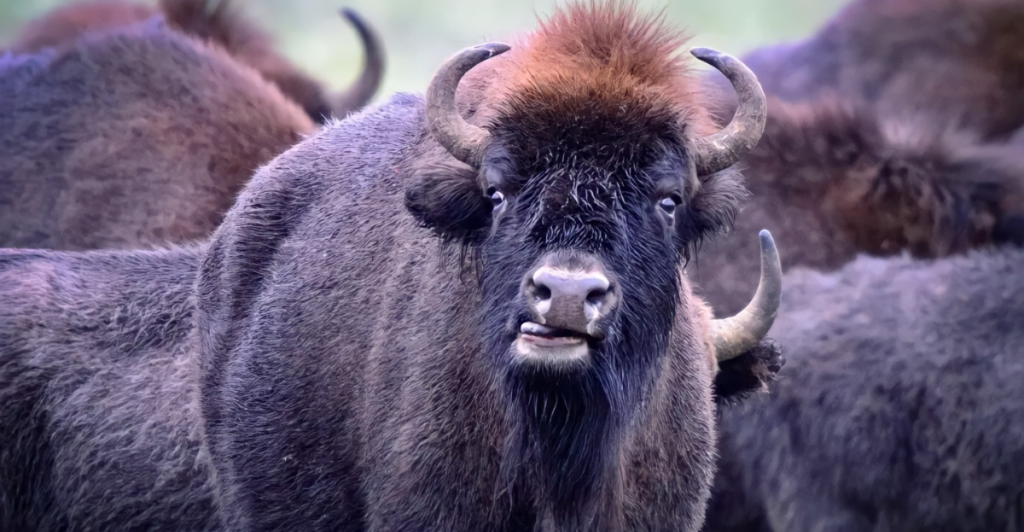
These creatures are truly remarkable and have persevered despite every challenge that came their way. Bison were once on the brink of extinction, but thanks to conservation efforts, they have recovered. While these creatures roam the plains around the U.S., many people know very little about these gentle giants, and they can be pretty fascinating. Here are some of the best facts about Bison you might not have known.
They Are The Largest Land Mammal in North America
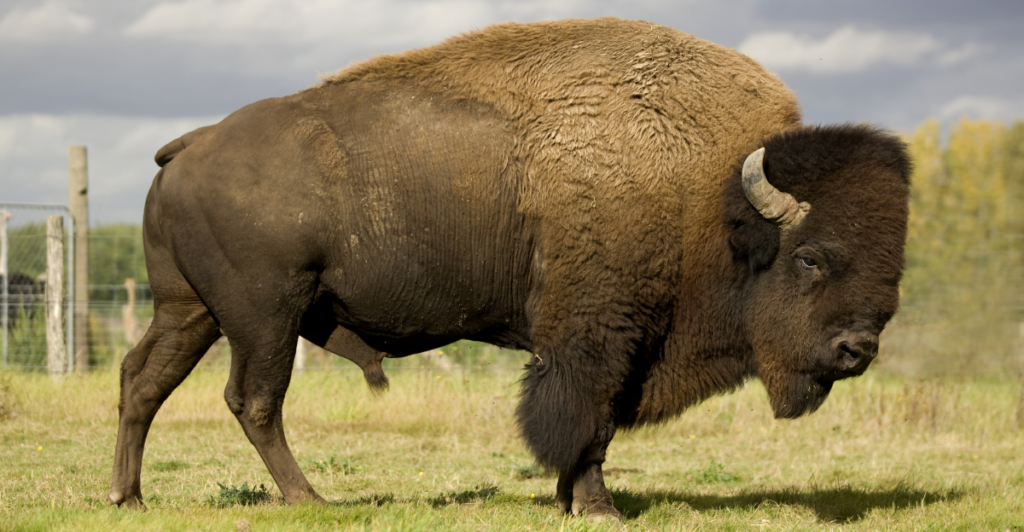
Surprisingly, Bison are the largest land mammals in North America. An adult male can weigh up to 2,000 pounds and stand six feet tall at the shoulder. Cows, on the other hand, are a little bit smaller. They usually weigh around 1,200 pounds and stand about 5 feet tall.
These massive creatures are instantly recognizable by their muscular humps, shaggy dark brown fur, and thick skulls, which are built to endure harsh climates and physical challenges. Despite their formidable size, Bison are surprisingly agile; they can run up to 40 miles per hour and quickly jump over obstacles.
They’re Not Buffalo
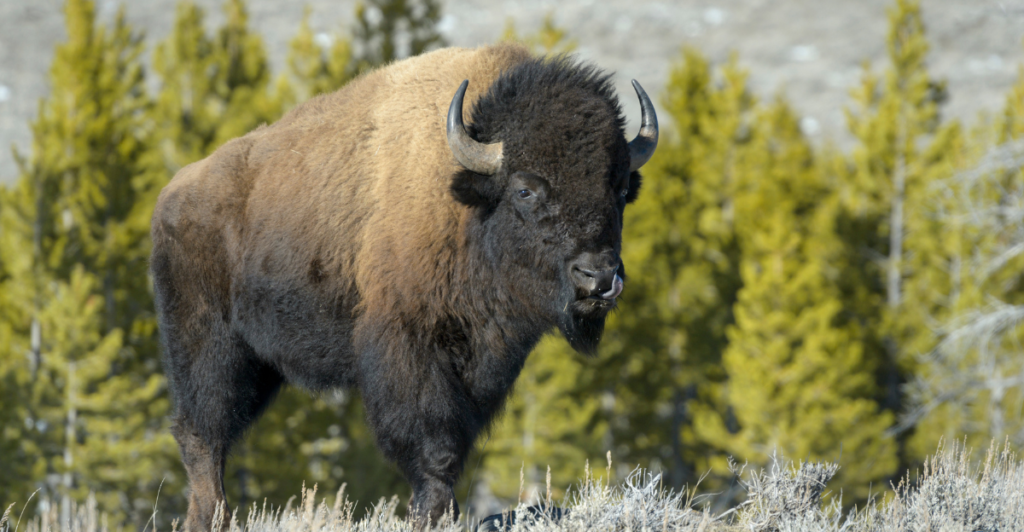
Bison are often referred to as Buffalo, which isn’t true, believe it or not. Genuine Buffalo, such as the African Cape buffalo and the Asian water buffalo, are native to Africa and Asia, while Bison are exclusive to North America and parts of Europe.
The confusion likely began with early European explorers who mistakenly associated the Bison with Buffalo due to superficial similarities, possibly influenced by the French word boeuf (meaning beef) or the resemblance of Bison hides to buff coats worn by soldiers.
Bison have a shoulder hump, thicker fur adapted for harsh winters, and shorter, sharper horns compared to the more prominent, curved horns of authentic Buffalo.
Buffalo Were Once Crossbred With Cattle
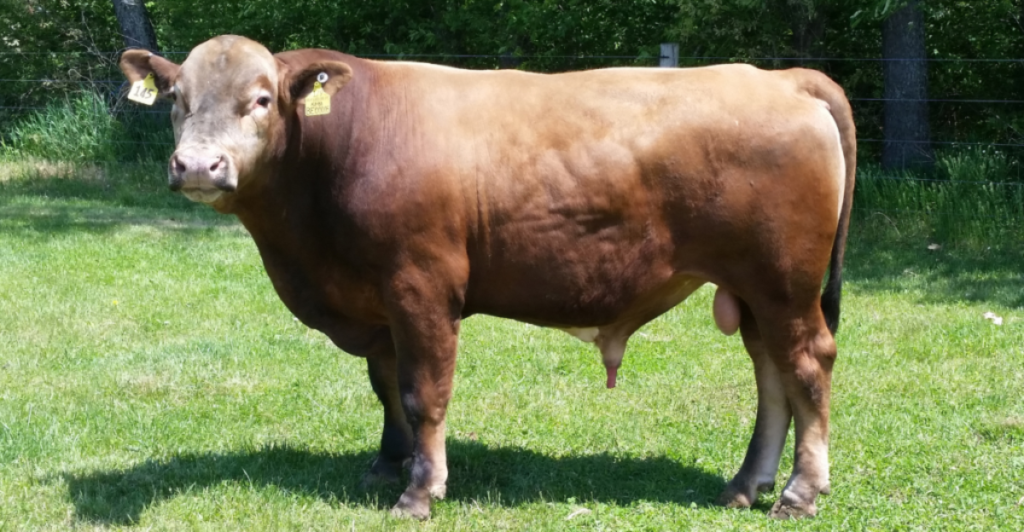
In the late 19th century, American Bison were crossbred with domestic cattle to create a more resilient and productive beef animal. This effort, driven by cattle ranchers, combined the Bison’s hardiness with the cattle’s beef-producing qualities. While the hybridization produced animals known as “beefalo” or “cattalo,” the project largely failed to achieve its goals and was eventually abandoned.
These crossbreeding experiments left a lasting genetic legacy. Modern genomic studies have revealed that nearly all contemporary bison herds in North America carry small amounts of cattle DNA due to these historical hybridization events. Although this interspecies mixing complicates conservation efforts, it is also credited with helping to save Bison from extinction during their population crash in the late 1800s.
Yellowstone National Park Has Always Been Their Home
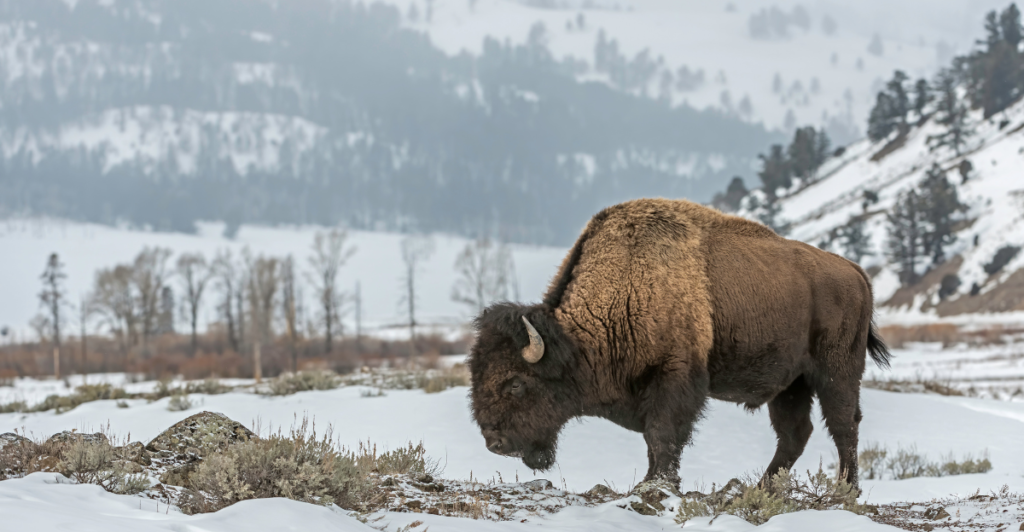
Yellowstone National Park has always served as a sanctuary for the American Bison, preserving their legacy as one of the last free-ranging herds in North America. While Bison once roamed the continent in vast numbers, their population was decimated by the late 19th century, leaving only about two dozen wild Bison in Yellowstone’s Pelican Valley.
Due to early conservation efforts, the park became a critical refuge for these iconic animals, including the introduction of 21 bison from private herds in 1902. Over time, these Bison mixed with the park’s original herd, and their population steadily rebounded. Yellowstone is home to approximately 5,000 bison, representing one of the purest and most ecologically intact herds.
They Are Part of Indigenous Culture
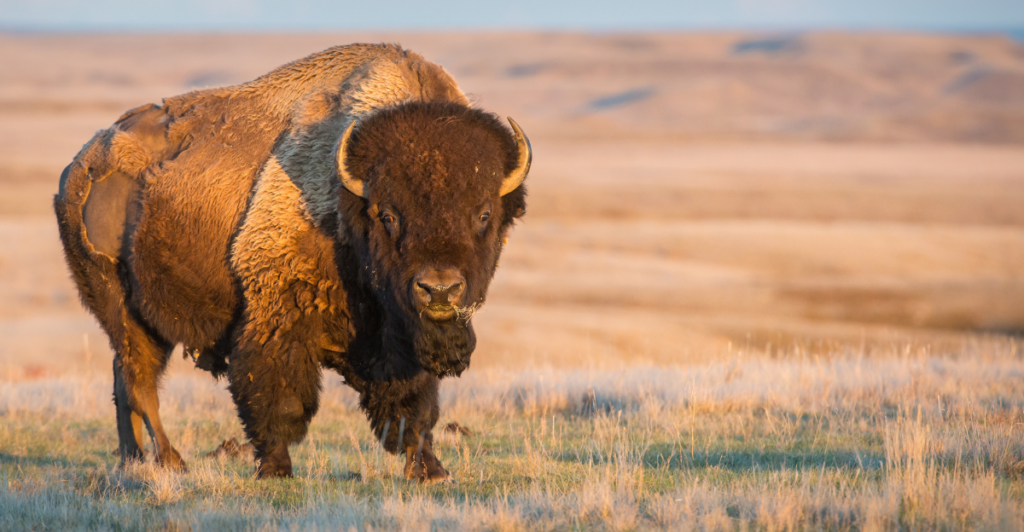
For millennia, Native American tribes relied on Bison for survival, utilizing every part of the animal for food, clothing, shelter, tools, and ceremonial purposes. Beyond its practical uses, the Bison is deeply woven into Indigenous spirituality and cultural identity.
Many tribes view the Bison as a gift from the Creator, central to their creation stories and rituals. For example, the Sioux regard the birth of a white buffalo as a divine sign heralding renewal and hope.
They Were Nearly Extinct In The 19th Century
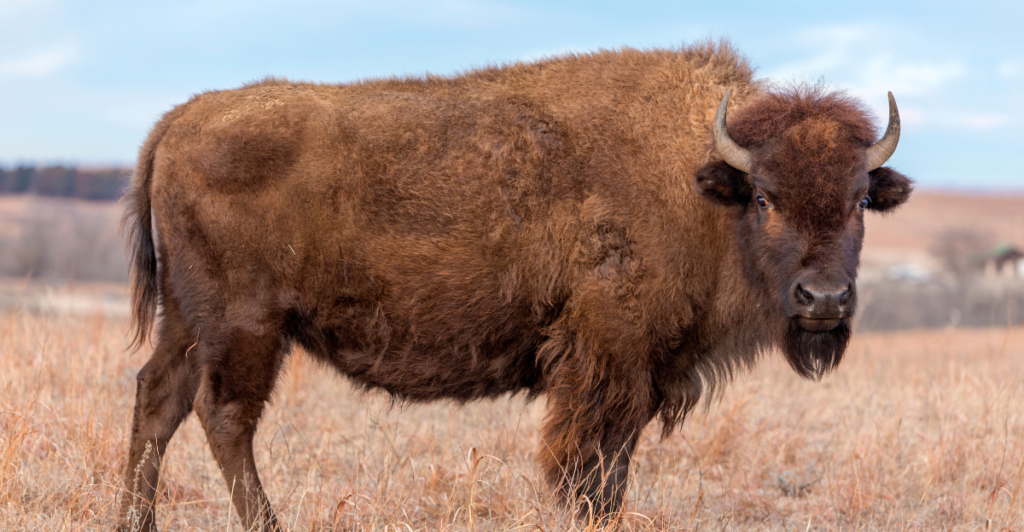
The American Bison faced near extinction due to relentless overhunting, habitat destruction, and targeted government policies aimed at displacing Native American tribes. Once numbering between 30 to 50 million across the Great Plains, their population plummeted to fewer than 100 wild bison by the late 1880s.
Unlike Indigenous hunters who used every part of the animal sustainably, European settlers hunted Bison en masse for hides and tongues, leaving carcasses to rot. The construction of railroads and advancements in firearms made large-scale slaughter more efficient. At the same time, government strategies deliberately sought to eliminate Bison as a food source for Native Americans during conflicts.
Recovery efforts began in the late 19th century, including conservation initiatives like the establishment of Yellowstone National Park’s herd and the founding of the American Bison Society in 1905, which helped bring this iconic species back from the brink.
They Have Unique Physical Adaptations
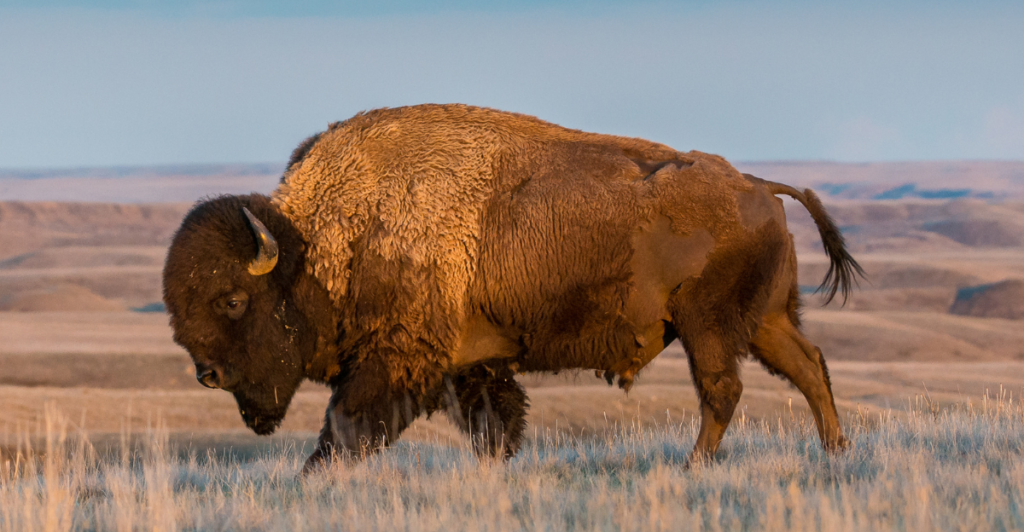
Have you ever noticed the funny-looking hump on their shoulders? Its massive shoulder hump is composed of powerful muscles that support its heavy head and enhance its running stride, allowing Bison to reach speeds of up to 40 miles per hour.
Their thick fur provides critical protection against extreme weather. Shaggy hair on the front end shields them from biting insects and cold winds, while shorter fur on the hindquarters helps regulate body temperature during hot summers.
They Love Wallowing
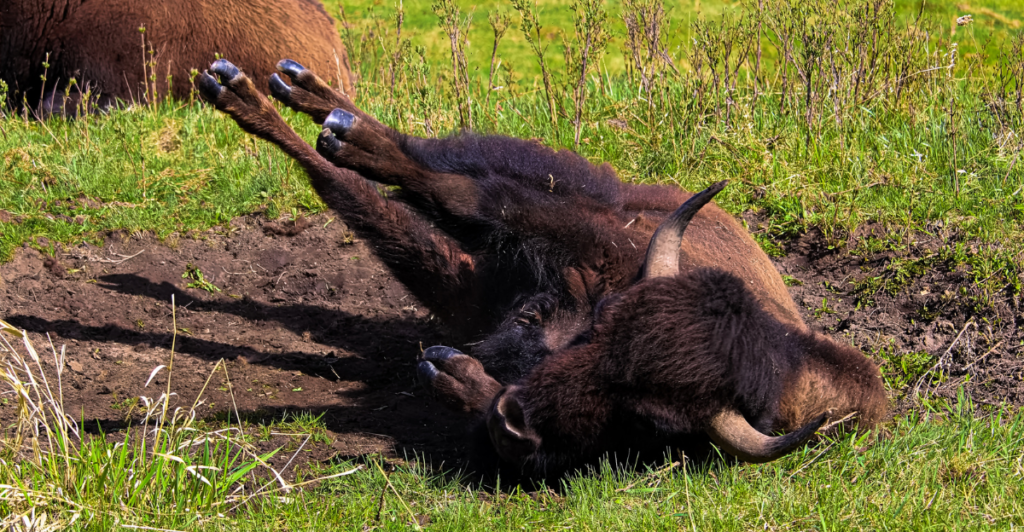
Wallowing is a fascinating and essential behavior of the American Bison, serving multiple purposes for the animal and its environment. When Bison roll in dirt or mud, they create shallow depressions known as wallows, which help them shed their winter coats, relieve skin irritations caused by biting insects, and reduce ectoparasites like ticks and lice.
During mating season, males use wallowing to advertise their physical condition by urinating in the wallow before rolling in it. The disturbed soil in wallows creates habitats for pioneer plant species and can act as water reservoirs that support other animals and moisture-loving vegetation.
Official National Mammal

In 2016, the American Bison was officially designated as the United States’ first national mammal through the signing of the National Bison Legacy Act by President Barack Obama. This historic recognition elevated the Bison alongside the bald eagle as a symbol of American identity, reflecting its deep ecological, cultural, and historical significance.
Once on the brink of extinction, the Bison’s remarkable comeback represents resilience and unity, values cherished in American society. The designation also acknowledges the Bison’s role as an ecological keystone and economic contributor, with its grazing patterns benefiting prairie ecosystems and its products supporting rural livelihoods.
Explore more of our trending stories and hit Follow to keep them coming to your feed!

Don’t miss out on more stories like this! Hit the Follow button at the top of this article to stay updated with the latest news. Share your thoughts in the comments—we’d love to hear from you!







